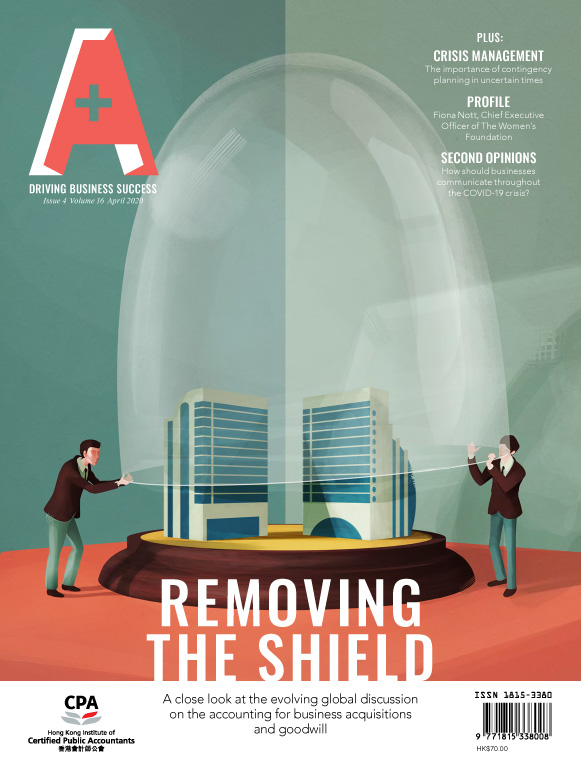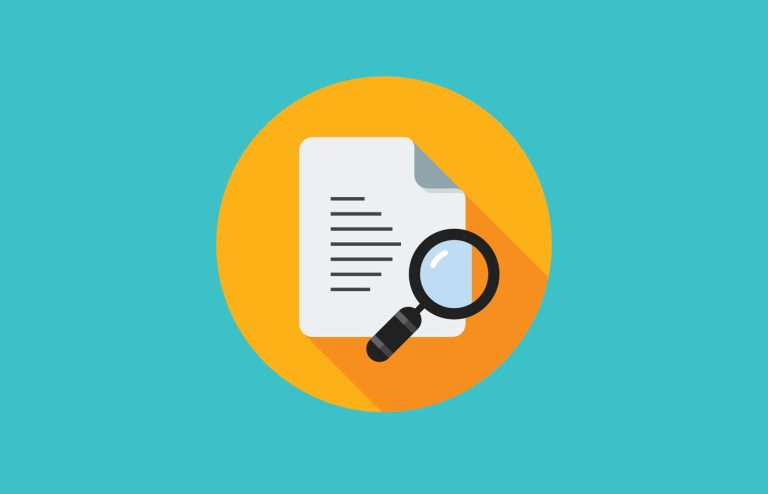When Carillion, a British multinational facilities management and construction services company, went into administration in January 2018 it had a goodwill asset of almost £1.6 billion (HK$15.5 billion) on its balance sheet. Yet this was not enough to keep it solvent.
The fact that such a large asset was unable to support the company is illustrative of one of the issues in an ongoing debate within the profession over whether goodwill should continue to be accounted for through the current regime of impairment-only or whether an amortization approach should be returned to. Acquisitions do not always perform in subsequent years as well as management initially expected, yet goodwill from an acquisition often remains on the books indefinitely.
Ultimately, a renewed focus on the accounting of goodwill and better disclosures about how an acquisition performs against management’s targets would help investors to hold a company’s management to account for its decisions.
What is goodwill?
To understand why a large amount of goodwill was unable to save Carillion, it’s important to understand what goodwill is from an economic and an accounting perspective.
Firstly what is a business? A simple question, but one with complex answers – especially when it comes to the accounting treatment. In International Financial Reporting Standard (IFRS) 3 Business Combinations (and its Hong Kong equivalent, HKFRS 3), a “business” is defined as “an integrated set of activities and assets that is capable of being conducted and managed for the purpose of providing goods or services to customers [to generate income].” The assets that compose a business can be both physical assets like machinery, buildings, and an assembled workforce, and non-physical assets, called intangible assets. These include patents, business processes and trademarks. Many of these assets can be valued based on market data.
This makes sense, yet when a business is acquired it may go for multiples of its book value – the value of recognized identifiable net assets for accounting purposes. How should payments above the book value be recorded by the acquirer? Is this extra payment an asset itself and how should it be subsequently accounted for?
In accounting, this difference between the acquisition price and the book value of the acquired assets is called “goodwill.” This intangible asset is thought to broadly represent the going concern value of the business (that is, a value based on the profits it could have made operating independently) and any expected synergies the acquirer expects when integrating the acquired business into their existing one.
For subsequent accounting purposes, because its carrying value is dependent on existing business operations or equipment, goodwill must be tied to other assets. This means that when a company records goodwill, it must allocate this value to specific parts of the business or sets of assets called cash-generating units (CGUs) in order to test goodwill for impairment.
“Goodwill is defined as an asset representing future economic benefits arising from other assets acquired in a business combination that are not individually identified and separately recognized. Because of its calculation, goodwill is really a residual amount, a leftover amount, that cannot be separately identified or directly measured,” says Ernest Lee, Technical Partner, Deloitte China and Chairman of the Hong Kong Institute of CPAs’ Financial Reporting Standards Committee. “In quite a lot of business combinations, the goodwill amount can be very significant with respect to the total assets and the total equity,” he continues.
Changing views
Since 2004, and the introduction of IFRS 3, goodwill has been treated as a historical cost asset subject only to annual impairment testing. This means that unless there is an impairment, often due to a negative unexpected event or a large change in the market or customer preferences, the goodwill will remain on the balance sheet indefinitely.
“How goodwill should be accounted for is a long-term topic of debate,” says Michelle Fisher, Deputy Director, Standard Setting at the Institute. “Before IFRS 3 was issued, goodwill was amortized on a systematic basis over its estimated useful life. However, feedback indicated that predicting the useful life of goodwill was difficult and amortization over an arbitrary period does not provide investors with useful information,” she says.
“The International Accounting Standards Board (IASB) completed a post-implementation review of IFRS 3 in 2015. The review found that users had significant concerns about the quality of information they were getting about acquisitions and there were also some concerns raised about the accounting for goodwill. This was always controversial,” says Tom Scott, Board member of the IASB. He highlights the “too little, too late” issue, where many argue that goodwill impairment happens later than it should have and for a lower amount; the relevance of the impairment information provided in the financial statements; and the cost of the impairment testing model relative to its benefits as the main concerns.
In March this year, the IASB published its discussion paper DP/2020/1 Business Combinations – Disclosures, Goodwill and Impairment, which discusses possible changes to the accounting treatment of business combinations and goodwill. “The discussion paper outlines the information gathered through the post-implementation review, plus evidence of the approach taken by the United States Financial Accounting Standards Board,” Scott says.
The improvements being considered include changes to the disclosures around acquisitions, particularly for larger acquisitions, to enable investors and users of financial statements to better understand the strategic rationale behind investment decisions and the metrics by which acquisitions are monitored. They also include possible changes to the impairment testing regime for goodwill to remove the need for annual impairment testing and amend how value in use is estimated. The discussion paper also describes the arguments for and against amortization of goodwill, and provides the IASB’s preliminary view to not reintroduce amortization – a view that was taken by a slim majority of the board.
“Including preliminary views comes from the board’s belief that this is a more effective way to communicate, as it creates a better focal point. That said, people should understand that the board has an open mind on all these issues and we will report the received feedback,” says Scott.
“In quite a lot of business combinations, the goodwill amount can be very significant with respect to the total assets and the total equity.”
Leading the discussion
The staff of the Institute has published its own research paper on the topic of goodwill in collaboration with the staff of the Accounting Standards Board of Japan (ASBJ). Fisher says that the Institute chose to issue the research paper to coincide with the IASB’s discussion paper to provide timely input into the global debate. “We knew the issuance of the discussion paper represented a great opportunity for us to contribute to the international discussions on goodwill and impairment, and help to influence financial reporting in this area. The research paper includes our research and views we were developing internally,” she says.
Tiernan Ketchum, Associate Director, Standard Setting at the Institute and one of the research paper’s lead authors, explains the arguments set out in the research paper, and how they are backed up by new data. “The paper provides data on the scale of goodwill in listed entities across various jurisdictions. It also goes into detail on the conceptual arguments as to the nature of goodwill and what it represents on the balance sheet, and arguments for why goodwill should be amortized.” he says.
For Scott, this sort of research from national standard setters like the Institute and the ASBJ is appreciated by the board. “Standard setters will often undertake research projects on their own or in collaboration with others. This often leads to publishing valuable monographs and papers,” he says. In the case of the Institute’s new paper it is the combination of the descriptive statistics and analysis that he particularly appreciates. “The paper provides some new information, particularly in how the arguments are laid out, which are more thorough and tied together better, making it more complete.”
Growing balances
Goodwill balances increased markedly over the years, according to data reported in the research paper. Between 2014 and 2018 total goodwill for surveyed companies increased by an average of 45 percent in the U.S., 26 percent in Europe, 60 percent in Hong Kong and 74 percent in Japan. Based on the data, the research paper concludes that it is likely the “too little, too late” issue exists. The paper also expands on the following.
Firstly, long-standing and increasing goodwill balances can negatively affect the faithful representation of financial statements because goodwill tends to become increasingly less representative of the underlying entity over time. Because goodwill is recognized as a static amount, being the difference between the fair value and book value of an acquisition as of a historical acquisition date, over time as the acquisition is integrated, and the entity and its fair and book value changes, that historical goodwill becomes increasingly meaningless.
Secondly, these goodwill balances may negatively incentivise management and misrepresent risks. From a macro perspective, goodwill accounting tends to be pro-cyclical and results in balance sheets being held up by an increasingly nebulous asset. Goodwill cannot be sold or liquidated, as such, leveraging against it or using it to proceed with corporate actions like dividends can be problematic. Existing goodwill requirements also can incentivise negative management behaviour such as big bath accounting and the overvaluation of acquisitions.
Fisher notes the research paper aims to contribute to the discussion. “The IASB has said it is particularly keen to hear about any new evidence or new arguments to support different accounting approaches for goodwill, we believe our findings will help,” she says.
Shielding
Lee sees some problems with the standards as they are currently written, beyond the issue of “too little, too late.” For him, there is another area of concern, that of “too late, and then a lot.” He says that there are various reasons for this, but many people argue it’s due to the complexity of the impairment test. Sometimes you may not need to impair because the goodwill is shielded by the other assets (both recognized and unrecognized) in the CGU it has been allocated to.
Practitioners must follow standards when undertaking their audits. For the impairment of goodwill, Lee notes that the test is on a residual number on the statement of financial position. Acquired goodwill may be shielded by internally generated goodwill and any other unrecognized headroom in the CGU. “To me, the shielding effect happens because of the mechanics of the standard. This effect makes the impairment of goodwill and the number on the statement of financial position become less meaningful to people,” he says.
Lee gives an example. “You may have a company with some headroom that covered a loss in a prior year. But if all of a sudden due to the economic situation, the shield is fully taken down, applying the standard, you end up with a big amount of impairment loss,” he says.
An impairment is hard for management as well, he notes. “Impairment is regarded as a failure, particularly early on after an acquisition, such as if an impairment is required within the same year.”
For Scott, the issue is that managements’ and investors’ understanding behind impairment testing is inaccurate. “Even the language around it, people say ‘how are you testing goodwill for impairment?’ Actually, we’re not, we’re testing a CGU for impairment, goodwill is totally integrated into the assets of the CGU,” he says. As long as the recoverable amount of the CGU exceeds its carrying amount, goodwill remains. If the recoverable amount of the CGU falls below its carrying amount, goodwill is impaired. Scott notes that this is where goodwill is special, “it’s less traceable and a little bit more nebulous. So if a CGU has goodwill, when the CGU’s recoverable amount falls below the carrying value, then goodwill takes the brunt of the hit until it is exhausted and then you go and start impairing the rest of the assets,” he says.
Some view this as working as intended. “This comes from the view of some people and even some standard setters, who believe fairly strongly that as long as the carrying amount of the CGU is not impaired, they’re okay to go with the conclusion that the goodwill is not impaired. These people understand what the impairment test does and they believe that is sufficient to justify it,” notes Scott.
A finite life?
For Ketchum, the issue is that the acquired goodwill represents a point in time snapshot of the entity. “This impairment shield issue obscures the reality of goodwill, because what is in the financial statements as an asset arising from a historical acquisition may be shielded by cash flows of a significantly different entity,” he says. “Over time, the acquisition may be integrated, and the overall entity enhanced and transformed in myriad ways to the point where the originally recognized goodwill becomes largely meaningless – and even confusing if impairment occurs years after an acquisition has been successfully monetized.”
To Ketchum, management should be able to determine a time period over which the acquisition and its related goodwill will be utilized. Simple questions can be used to inform this, such as “What is my objective for the acquisition?” and “What are my expected results from the acquisition and when are those expected? What about my integration timeline and key milestones?” “Amortization ensures that the necessary function of cost allocation will be applied in a systematic and understandable manner,” he says.
Lee agrees, stating that acquired goodwill becomes increasingly meaningless as a separate item on the statement of financial position. “Amortization would provide a mechanism to reflect the utilization of the acquired goodwill in a systematic and easily understandable manner.”
Scott notes an interesting point about the Institute’s research paper. “People who argue that goodwill has an indefinite life take some of the same positions. They argue that it’s fundamentally the fair value less the recognized book values at acquisition, and you can’t disassociate the different elements within this calculation. Therefore, if you amortize the acquired goodwill, you would essentially be saying you can differentiate it from internally generated goodwill and other assets. And so the argument set out in the research paper is interesting in that it takes this same economic perception and draws a different conclusion. That’s kind of striking to me.”
The time is now
Scott hopes that people will read both the IASB’s and the Institute’s papers, and contribute their own views on the topic. “It’s important for board members and staff to remember how long the standard setting process takes and make sure we get that right. It’s amazing I did not know I could think as hard about acquisitions and goodwill as I have for the last year. They say that any problem can become fascinating once you’re into it, and now with goodwill now I’m into it I am fascinated. It consumes a lot of my waking hours.”
Lee also hopes people choose to read the papers. “I find it a very interesting read, and I would also encourage people to provide feedback to both the IASB’s and the Institute’s paper, especially as we have so many acquisitions and an active initial public offering market in this part of the world.” he says. “This is an important issue for Hong Kong.”
How to get involved
Tom Scott, Board member of the International Accounting Standards Board, describes the discussion paper as a really huge opportunity to have an influence. ”Whatever we do decide, there will be an exposure draft. If that gets all the way to a standard nobody is touching it for a while,” he says.
Ernest Lee, Technical Partner, Deloitte and Chairman of the Institute’s Financial Reporting Standards Committee, says that the standard as it currently is written is complex and difficult to understand. “People are thinking about “what does it mean to have goodwill recognized on the statement of financial position?” and over many years you see that there are lots of contentious discussions about how to account for goodwill and even what is goodwill. Some advocate for an immediate impairment or immediate write off against retained earnings, or against profit and loss, some take the view that impairment only is the best way, and some advocate for amortization. So it doesn’t seem to have a very definitive approach to take for goodwill. So therefore it became a very contentious issue over the years.”
Michelle Fisher, Deputy Director, Standard Setting at the Institute, highlights: “We are keen to hear our stakeholders’ views on the discussion paper and research paper and we so encourage you to send us a comment letter or attend one of our upcoming roundtables where you can discuss and share your views with us and other stakeholders.”
The Institute has a dedicated webpage for its goodwill project to help stakeholders stay up to date with related events and activities, and where its research paper can be found.
Between 2014 and 2018, total goodwill for surveyed companies increased by an average of 45 percent in the United States, 26 percent in Europe, 60 percent in Hong Kong and 74 percent in Japan, according to the goodwill research paper published by the staff of the Institute in collaboration with the staff of the Accounting Standards Board of Japan.



















